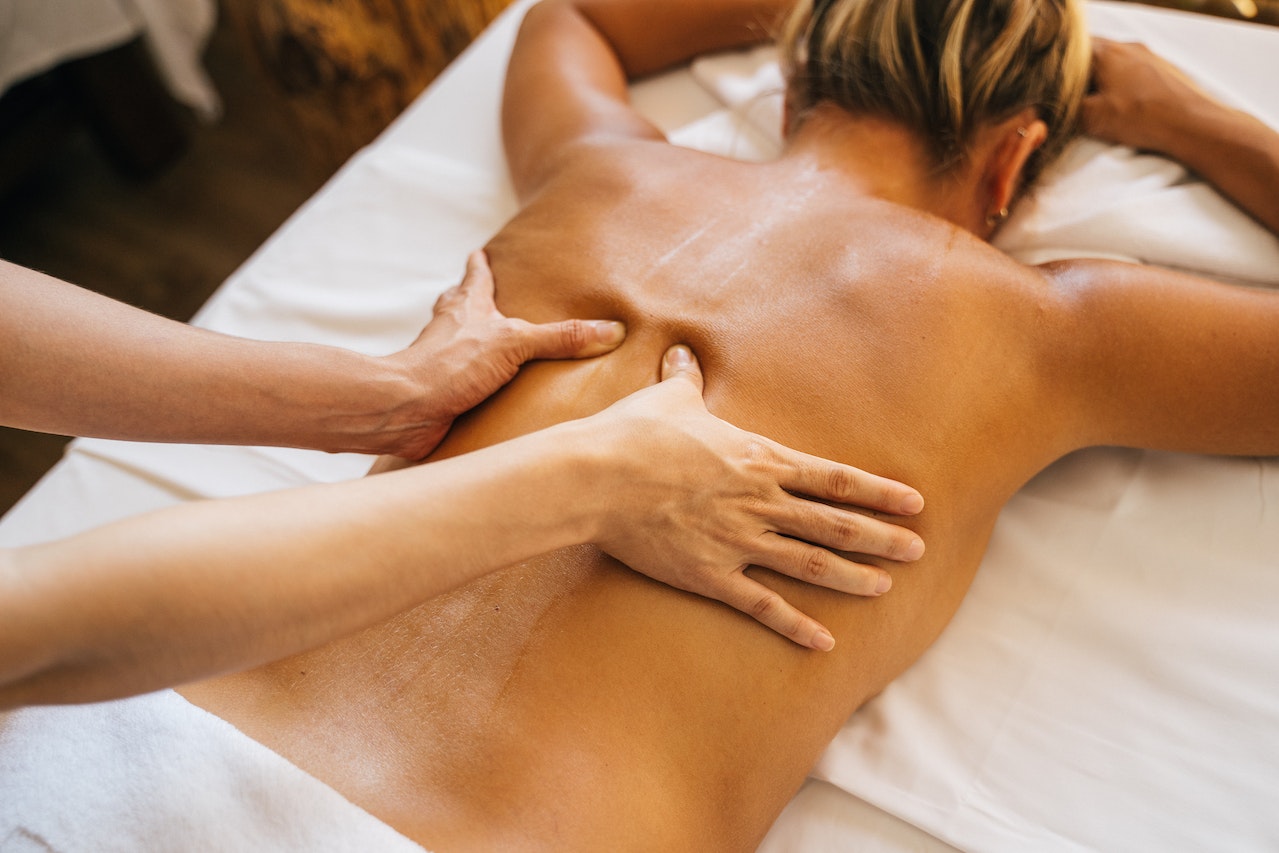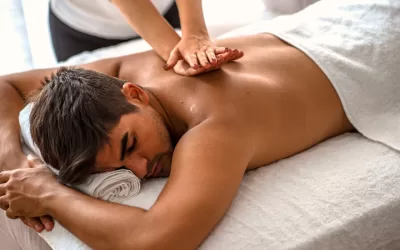Did you know that a simple massage can boost an athlete’s performance by up to 20%? Dive into the science behind how massages work wonders for athletic bodies by exploring mechanisms of touch on muscle tissue wellness. From enhancing flexibility and reducing muscle soreness to improving blood circulation and speeding up recovery, massages offer a myriad of benefits beyond relaxation. Understanding the physiological mechanisms of this age-old massage technique can provide athletes with a competitive edge in their training regimens. Let’s unravel the secrets behind why incorporating regular massages into an athlete’s routine is not just a luxury but a strategic necessity for peak performance, aiding in the recovery process and optimizing the nervous system.
Understanding The Neurophysiological Mechanisms Of Massage Therapy
Endorphins: Natural Painkillers
Massage therapy triggers the release of endorphins, which act as the body’s natural painkillers. These endorphins help alleviate discomfort and soreness in muscles, providing relief to athletes after intense workouts or competitions. The soothing effects of massage contribute to a sense of well-being and relaxation.
Massage promotes muscle recovery by enhancing blood circulation and oxygen supply to tissues. This increased blood flow aids in flushing out toxins accumulated during physical activity, reducing inflammation, and promoting faster healing processes within the muscles. By improving oxygen delivery, massage helps relax muscles and decrease tension, enabling athletes to recover more effectively between training sessions.
Activation Of Parasympathetic Nervous System
The mechanical pressure applied during massage activates the parasympathetic nervous system, responsible for rest and relaxation responses in the body. This activation induces a state of deep relaxation by slowing down heart rate, lowering blood pressure, and promoting digestion through peristaltic action in the intestines. Athletes benefit from this calming effect as it helps them unwind both physically and mentally after strenuous workouts.
The Physiological Effects Of Massage On Athletic Performance
Improved Flexibility And Range Of Motion
Regular sports massage is known to have positive effects on athletic performance by enhancing flexibility, range of motion, and the muscular system. Athletes who receive massages regularly often experience increased flexibility, allowing them to move more freely during their training sessions or competitions. This improved range of motion can lead to better performance in various sports, such as track and field, gymnastics, or swimming.
Sports massage helps athletes reduce muscle soreness and inflammation after intense physical activity. By targeting specific areas with techniques like deep tissue massage or trigger point therapy, therapists can help alleviate discomfort caused by overworked muscles. As a result, athletes may recover faster between workouts or events due to reduced muscle soreness.
Enhanced Circulation For Faster Recovery
Massage plays a crucial role in improving circulation throughout the body. By stimulating blood flow to different muscle groups, massage therapy assists in the removal of metabolic waste products from tissues. This enhanced circulation not only speeds up recovery time but also promotes overall muscle health by ensuring that vital nutrients reach the muscles efficiently.
How Massage Affects Every System In The Body
Stimulating The Lymphatic System
Massage aids in stimulating the lymphatic system, which plays a crucial role in removing toxins and waste from our bodies. This stimulation helps enhance the efficiency of this essential system, aiding in detoxification processes. By promoting lymph movement, massage assists in flushing out harmful substances that can accumulate within tissues.
Massages target specific areas to boost lymph flow, facilitating the elimination of metabolic waste products. For instance, gentle strokes towards lymph nodes encourage drainage and improve overall circulation throughout the body. By enhancing lymph circulation through massage therapy, athletes can experience quicker recovery times after intense physical activities.
Calming Effect On Nervous System
One significant benefit of massage is its ability to have a calming effect on the nervous system. Athletes often experience high levels of stress and anxiety due to rigorous training schedules and competitive environments. Through targeted techniques like Swedish or deep tissue massages, individuals can find relief from these symptoms.
By soothing nerve endings throughout the body, massages help reduce feelings of tension and promote relaxation responses within the brain. This calming influence not only benefits athletes physically but also mentally by allowing them to unwind and destress effectively after demanding workouts or competitions.
Promoting Better Sleep
Another advantage of incorporating regular massages into an athlete’s routine is their positive impact on sleep quality. By reducing cortisol levels—the stress hormone—and increasing serotonin production—known as the “feel-good” neurotransmitter—massages contribute to improved sleep patterns for athletes.
Athletes who struggle with falling asleep or staying asleep may find that receiving massages regularly helps regulate their sleep-wake cycles more effectively. The combination of reduced cortisol levels and increased serotonin release creates an optimal environment for restful nights, ensuring that athletes wake up feeling refreshed and ready for another day of training or competition.
The Impact Of Sports Massage On Muscle Recovery And Injury Prevention
Scar Tissue Breakdown And Faster Healing
Sports massage plays a crucial role in injury prevention by breaking down scar tissue and adhesions. These techniques help the body heal faster from soft tissue injuries. For athletes, this means getting back to training sooner after an injury.
Regular sports massages can prevent injuries by addressing muscle imbalances that may lead to strains or tears. By identifying and correcting these issues early on, athletes can maintain proper biomechanics during physical activity, reducing the risk of getting hurt.
Improved Circulation For Enhanced Repair
One of the key benefits of sports massage is its ability to improve circulation throughout the body. This enhanced blood flow ensures that muscles receive an adequate supply of nutrients and oxygen needed for repair after intense workouts. By facilitating nutrient delivery to damaged tissues, sports massage accelerates the recovery process, allowing athletes to bounce back quicker.
Exploring Different Types Of Sports Massage Techniques
Deep Tissue Massage
Deep tissue massage targets deeper layers of muscle tissue to release chronic tension and knots. This technique is beneficial for athletes dealing with tight muscles and injuries that affect deeper muscle layers. By applying firm pressure, deep tissue massage helps break down scar tissue and improve blood circulation, promoting faster healing.
Pros:
- Effective in relieving chronic muscle tension.
- Helps improve blood flow to aid in recovery.
Cons:
- May cause soreness during or after the massage.
- Not recommended for individuals with certain medical conditions.
Trigger Point Therapy
Trigger point therapy focuses on specific points of muscle tightness or spasm for pain relief. Athletes often experience trigger points due to overuse or injury, leading to localized pain and reduced range of motion. By targeting these areas through precise pressure techniques, trigger point therapy can alleviate discomfort and enhance flexibility.
Key Information:
- Ideal for addressing isolated areas of muscular discomfort.
- Helps reduce referred pain caused by trigger points.
Myofascial Release Techniques
Myofascial release techniques stretch and release the connective tissue surrounding muscles, improving mobility. This method aims to address restrictions in the fascia that may limit movement and contribute to muscular imbalances. Athletes benefit from myofascial release by enhancing their overall flexibility and reducing the risk of injuries related to restricted fascia.
- Start by identifying areas of restricted movement.
- Apply sustained pressure or gentle stretching to release tension within the fascia.
- Focus on maintaining proper breathing throughout the myofascial release session.
Incorporating a variety of sports massage techniques such as deep tissue massage, trigger point therapy, and myofascial release can provide comprehensive benefits for athletic bodies seeking enhanced performance and recovery mechanisms.
Integrating Sports Massage Into Athletic Training Programs
Enhancing Performance And Reducing Injury Risk
Regular sports massage in training programs can boost performance and lower injury chances. By preparing muscles before an event, athletes optimize their performance through pre-event treatments. Post-event massages aid in faster recovery and prevent muscle soreness after intense workouts.
Sports massage offers a range of benefits for athletes, including improved flexibility, reduced muscle tension, enhanced circulation, and quicker recovery times. Athletes who incorporate sports massage into their routine often experience increased range of motion and better overall physical condition.
Pre-Event Preparation And Post-Event Recovery
Before competitions or intense training sessions, athletes benefit from pre-event sports massages that help loosen muscles and improve blood flow. These sessions aim to enhance flexibility while reducing the risk of strains or sprains during physical activities. On the other hand, post-event massages focus on aiding muscle recovery by flushing out toxins built up during exercise.
Athletic trainers play a crucial role in recommending appropriate types of sports massages based on an athlete’s specific needs. They may suggest deep tissue massage for addressing chronic pain or trigger point therapy to release tight knots in muscles effectively.
- Steps for Integrating Sports Massage into Athletic Training Programs:
- Consult with athletic trainers to identify the best approach.
- Schedule regular pre-event massages to prepare muscles adequately.
- Implement post-event massages as part of the recovery process.
- Monitor athletes’ responses to adjust the frequency or intensity as needed.

Psychological And Mental Health Benefits Of Athletic Massage Therapy
Promotes Relaxation And Stress Reduction
Massage therapy is not only beneficial for the physical body but also plays a crucial role in improving mental well-being. Athletes often experience high levels of stress due to intense training schedules and competitions. Regular massage sessions can help athletes relax, reducing stress levels significantly. This relaxation effect can lead to improved mental states, allowing athletes to focus better on their training and performance.
Athletic massage therapy assists in calming the mind by releasing tension stored in muscles, promoting a sense of tranquility throughout the body. By targeting specific muscle groups during massages, tension dissipates, leading to reduced stress levels overall. When athletes are less stressed, they can approach their activities with a clearer mindset, enhancing their overall performance.
Boosts Mood And Alleviates Depression Symptoms
In addition to promoting relaxation, athletic massage therapy has been shown to have positive effects on mood regulation. Athletes who incorporate regular massages into their routine often report feeling happier and more content. Massage helps boost serotonin and dopamine levels in the body—neurotransmitters responsible for regulating mood—which can alleviate symptoms of depression over time.
Pros:
- Improved mental well-being
- Enhanced focus during training
- Alleviation of depressive symptoms
Cons:
- Costly for some athletes
- Time-consuming depending on availability
Precautions And Contraindications In Sports Massage For Athletes
Avoiding Deep Tissue Massage In Acute Injuries Or Inflammation
Sports massage can be highly beneficial for athletes, but caution must be exercised to avoid exacerbating existing injuries or inflammation. Deep tissue massage should not be performed on areas with acute injuries as it may cause further damage and delay the healing process. Instead, gentle techniques like effleurage and petrissage can help promote circulation without adding unnecessary strain.
It is crucial for massage therapists working with athletes to have a thorough understanding of the athlete’s specific condition before proceeding with any treatment. By being aware of the location and severity of acute injuries or inflammation, therapists can tailor their approach to ensure optimal recovery without causing harm. For example, if an athlete has a recent muscle strain, applying deep pressure could worsen the injury rather than aiding in its healing.
Consulting Healthcare Providers For Certain Medical Conditions
Athletes with underlying medical conditions need special consideration when receiving sports massage therapy. Individuals with blood clotting disorders must seek guidance from their healthcare provider before undergoing any form of massage treatment. Blood clotting disorders pose a risk during massages as vigorous manipulation could potentially dislodge clots and lead to serious health complications such as strokes or heart attacks.
By consulting their healthcare providers beforehand, athletes can ensure that they receive safe and effective care tailored to their individual needs. This proactive approach allows both the therapist and the athlete to work together towards achieving optimal results while minimizing risks associated with certain medical conditions. It’s essential for all parties involved to prioritize athlete safety above all else during sports massage sessions.
Awareness Of Allergies And Sensitivities
In addition to physical considerations, it is equally important for massage therapists to be mindful of an athlete’s allergies or sensitivities during a session. Some athletes may have adverse reactions to certain oils or lotions commonly used in massages due to skin sensitivities or allergies. Prior knowledge about these potential triggers enables therapists to make informed decisions regarding product selection that aligns with each athlete’s unique needs.
Being proactive about identifying any allergies ensures that the sports massage session remains a positive experience free from discomfort or adverse reactions caused by allergens present in products used during treatment.
Embracing The Power Of Athletic Massage Therapy: A Call To Action
Improved Performance And Faster Recovery
Athletic massage therapy plays a crucial role in enhancing an athlete’s performance by promoting better blood circulation, which aids in delivering oxygen and nutrients to muscles efficiently. This improved circulation also helps in removing metabolic waste products from the muscles, reducing soreness and fatigue. By incorporating massage services into their routine, athletes can experience quicker recovery times after intense training sessions or competitions. For instance, a study published in the Journal of Sports Sciences found that athletes who received regular massages reported reduced muscle tension and enhanced flexibility compared to those who did not.
- Enhanced blood circulation leads to better delivery of oxygen.
- Regular massages help remove metabolic waste products more effectively.
Reduced Risk Of Injury And Mental Well-Being
In addition to physical benefits, sports massage can also contribute to preventing injuries by addressing muscle imbalances or tightness before they escalate into more severe issues. The powerful tool of massage therapy helps maintain optimal joint range of motion, reducing the likelihood of strains or sprains during athletic activities. Furthermore, the holistic approach of athletic massage therapy extends beyond physical advantages; it also positively impacts an athlete’s mental well-being by promoting relaxation and lowering stress levels. Athletes who prioritize self-care through regular massages often report feeling more mentally prepared for challenges on and off the field.
- Massage therapy addresses muscle imbalances early on.
- Regular massages promote relaxation and reduce stress levels.
Summary
You’ve delved deep into the world of athletic massage therapy, uncovering how it works wonders on both your body and mind. From the intricate neurophysiological mechanisms to the holistic impact on every system within you, it’s crystal clear that a good sports massage isn’t just a luxury; it’s a necessity for any athlete looking to up their game. By understanding the science behind it all, you’re not only enhancing your physical performance but also nurturing your mental well-being in ways you never imagined.
So, next time you hit the gym or step onto the field, remember the power of a rejuvenating sports massage. It’s not just about recovery; it’s about resilience and growth. Take that leap and incorporate athletic massage therapy into your routine – your body and mind will thank you for it.
The Role of Massage in Reducing Inflammation and Oxidative Stress
Athletes constantly push their bodies, leading to microscopic muscle damage that triggers inflammation and oxidative stress. Sports massage has been shown to reduce the production of pro-inflammatory cytokines while increasing antioxidant activity. This dual action helps prevent chronic inflammation, which can lead to conditions like tendinitis or muscle fatigue. A 2025 study on elite endurance runners found that regular deep tissue massage reduced oxidative markers by 25%, supporting faster recovery and sustained performance.
Enhancing Proprioception and Neuromuscular Coordination
One overlooked benefit of sports massage is its role in improving proprioception—the body’s awareness of movement and positioning. By stimulating sensory receptors in muscles and joints, massage enhances neuromuscular coordination, leading to more precise movements and a lower risk of injury. Research from top sports institutes suggests that incorporating myofascial release and trigger point therapy into an athlete’s regimen can improve balance and agility by up to 18%, making it an essential tool for high-performance training.
The Impact of Massage on Hormonal Balance and Cortisol Reduction
Beyond muscle recovery, sports massage plays a key role in regulating stress hormones. Athletes often experience elevated cortisol levels due to intense training, which can hinder muscle repair and suppress immune function. Studies have shown that just 30 minutes of massage post-exercise can lower cortisol by 31% while boosting serotonin and dopamine, leading to better mood, focus, and overall athletic performance. This hormonal balance not only accelerates physical recovery but also enhances mental resilience, keeping athletes at the top of their game.
Frequently Asked Questions
1. How Does Massage Benefit Athletic Bodies?
Massage benefits athletic bodies by improving circulation, reducing muscle tension, and enhancing flexibility. It helps in quicker recovery after intense workouts, prevents injuries, and promotes overall well-being for athletes.
2. What Are The Precautions To Consider In Sports Massage For Athletes?
Precautions in sports massage include avoiding deep tissue work on acute injuries, communicating openly with the therapist about any health conditions or concerns, and ensuring proper hydration before and after the session.
3. Why Is It Important To Integrate Sports Massage Into Athletic Training Programs?
Integrating sports massage enhances performance by promoting muscle relaxation, increasing range of motion, and aiding in injury prevention. It complements training routines by supporting recovery processes essential for sustained athletic success.
4. How Can Different Types Of Sports Massage Techniques Benefit Athletes?
Different types of sports massage techniques such as Swedish, deep tissue, or myofascial release offer unique benefits like reducing soreness post-exercise, breaking down scar tissue, improving blood flow to muscles crucial for optimal performance.
5. What Are The Psychological Benefits Of Athletic Massage Therapy?
Athletic massage therapy not only relaxes muscles but also reduces stress levels through the release of endorphins. This leads to improved mental focus during competitions and a positive mindset conducive to peak athletic performance.

Unlocking Peak Performance: Elevate Your Athletic Abilities With Medicinevolution’s Specialized Massage Therapy!
Are you an athlete facing the challenges of muscle soreness, sports injuries, or striving for optimal performance? MedicinEvolution is at the cutting edge of combining massage therapy and sports science to propel you toward your peak physical condition. By leveraging the latest in sports massage techniques, MedicinEvolution targets the specific needs of athletes, addressing the root causes of your muscular discomfort and enhancing your recovery process. Say goodbye to the limitations of muscle stiffness, sports-related injuries, and the repetitive strain that hinders your athletic progress—as MedicinEvolution delves into the unique demands of your athletic body, steering you toward significant improvement. Their expertly crafted massage therapies are designed to transition you away from the discomfort and challenges restricting your performance.
If you’re contending with persistent muscle soreness, injuries, or the daunting barriers to achieving your full athletic potential, MedicinEvolution’s specialized approach, rooted in the synergy of massage therapy and athletic science, is tailor-made for you. Don’t let the hurdles of sports injuries or muscle discomfort dictate the boundaries of your athletic journey—take the initiative and book your session with MedicinEvolution today! Embark on a path with their athlete-focused massage therapy techniques and begin advancing towards a stronger, more resilient, and performance-enhanced athletic life. Your body and mind, freed from the constraints of discomfort, will thank you for it!





